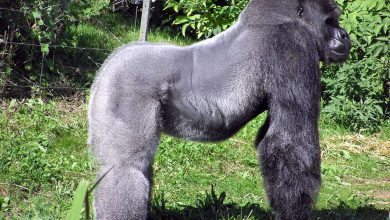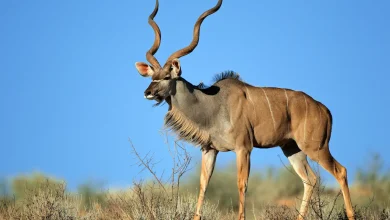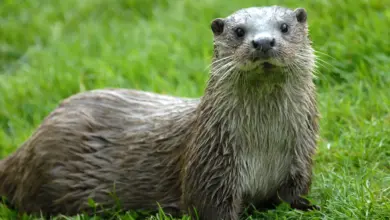What Eats A Giraffe? What Does A Giraffe Eat?
What eats a giraffe? Giraffes are majestic icons of the African savanna whose height and unique appearance create an illusion of invulnerability. Yet the harsh ecosystem is in fact, rife with a variety of dangerous predators that have evolved to hunt even these towering gentle giants for food and survival.
Lions, leopards, hyenas, and crocodiles are some of the most well-known apex giraffe consumers while others, like wild dogs, rock pythons, and martial eagles, utilize more specialized tactics to tackle challenging prey.
A wide array of giraffe body parts and meat is a vital renewable resource for these fellow African fauna that, in turn, regulate giraffe populations through natural selection while fascinating human observers.
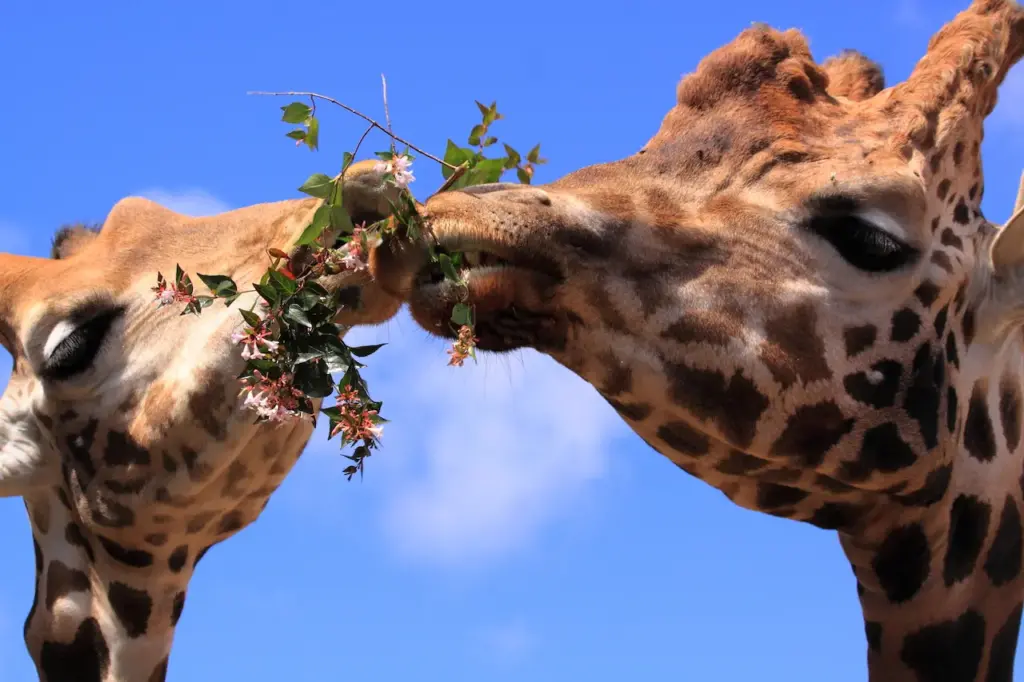
What Eats A Giraffe
Lions
Lions are one of the most common predators of giraffes. As large carnivores that live in the same African savanna habitat, lions frequently prey on giraffes, especially younger, older, or weaker individuals that are more vulnerable.
Giraffes rely on their immense size and powerful kicks to deter lions. But lions often hunt in pride, coordinating to isolate and take down even healthy adult giraffes. Typically, several lionesses will chase the giraffe until it’s exhausted, while another lion ambushes it from the side or rear for a decisive attack.
Once the giraffe is brought down, the lions swarm it. They begin feeding immediately, first eating the nutrient-rich internal organs. A giraffe provides a huge amount of meat, often feeding an entire pride for several days. This helps lion numbers thrive alongside the giraffe populations they depend on.
Leopards
Leopards are stealthy, solitary big cats that also prey on giraffes living in overlapping savanna habitats. Due to their secretive nature and dependence on trees, leopards rarely attack mature giraffes, which can easily kick and kill them.
Instead, leopards mainly ambush younger or weaker individuals when the opportunity arises, delivering a biting throat or neck attack. Their incredible strength allows them to drag massive giraffe carcasses high up into trees, out of the reach of competing predators on the ground.
Once safely hidden, a leopard can feed on a giraffe’s body for over a week. This nutritional bounty is vital for leopard survival and raising cubs within domains defended from other leopards.
Spotted Hyenas
Spotted hyenas are highly effective pack hunters that aggressively prey on even adult giraffes. Using complex cooperative tactics, hyenas exhaust and confuse giraffes, eventually pulling them to the ground where they are eaten alive.
Hyenas use their formidable jaws and teeth to rip off and consume huge chunks of flesh. The entire clan fights fiercely over the meat, leaving only scattered bones. These extremely aggressive, smart, and social hyenas are Africa’s most significant giraffe predators in many ecosystems.
Giraffes do not comprise the majority of spotted hyena diets. But because hyena clans are so numerous and frequently attack giraffes, they still have a very heavy predatory impact. Surplus killing is also common, with more giraffes killed than ever eaten.
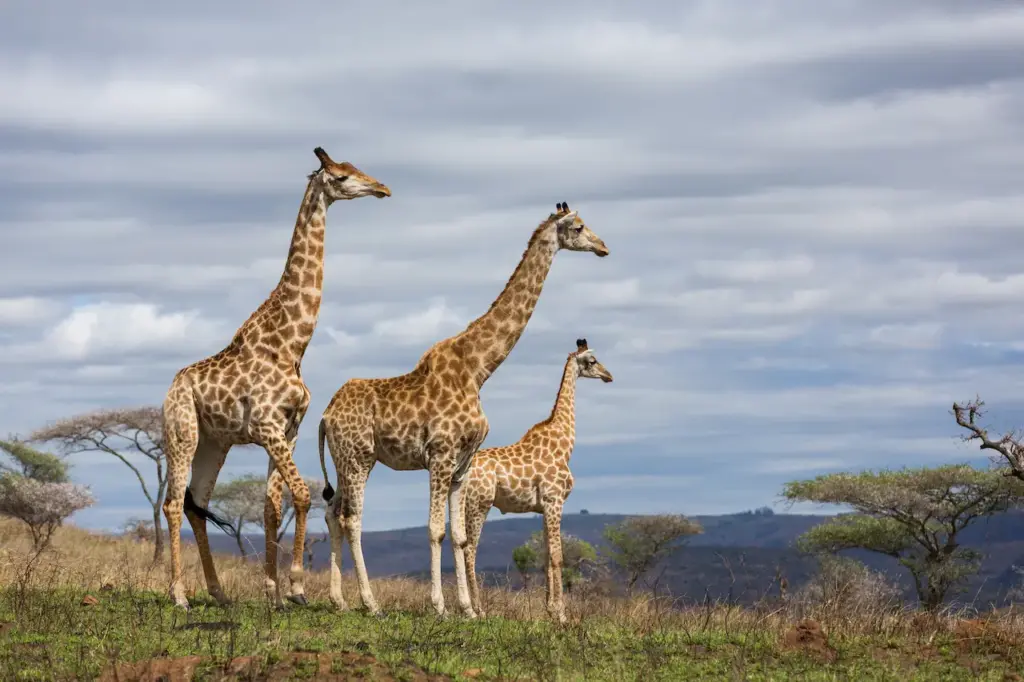
Nile Crocodiles
The enormous Nile Crocodile is an apex aquatic ambush predator relying on stealth, explosiveness, and raw power. Giraffes visiting water and river crossings for drinking become easy targets for crocodiles, which grab limbs or the head and drag the hapless victim into the water to drown.
Designed to feed on large animals and armed with the strongest bite of any animal, Nile crocodiles easily crush and dismember giraffes once drowned. Their huge size enables them to stash away enormous chunks of giraffe meat underwater to feed on for long periods.
Though attacks are a relatively minor mortality source, they still regulate giraffe access to scarce water resources. Crocodiles, therefore, influence both population numbers and movements in areas where they’re present.
African Wild Dogs
Highly social and cooperative African Wild Dogs specialize in wearing down larger swift prey like giraffes over long distances. Working as superb teams seemingly reading each other’s minds, they isolate panic-stricken giraffes from protective herds using continual harassment and relays.
Once their quarry is utterly exhausted miles later, the wild dogs hamstring it. Swarming their collapsed victim, they begin gruesomely disemboweling it while it’s still alive, a uniquely savage attack strategy evolved to avoid dangerous kicking hooves. In this manner, entire wild dog packs can feed on very large giraffes.
Wild dog numbers have declined drastically in recent decades. However, where they are still present, these ruthless pack hunters still help control giraffe populations through their particularly brutal specialized attacks.
Humans
Humans have long hunted giraffes for their meat, hides, and tail hair. Traditional hunting practices used spears and poisoned arrows. But modern weapons enable easy killing of even mature bull giraffes, causing overhunting in some areas.
Giraffe populations near expanding traditional African villages and towns are also increasingly impacted. Humans convert wild giraffe habitats to farms and livestock grazing lands. And giraffes are killed by crop farmers protecting their livelihoods or struck by vehicles.
Ongoing civil wars and political instability further endanger giraffes and their habitats, as armed militia groups feed on bushmeat and terrorist activities disrupt anti-poaching conservation. Overall, humans’ expanding infrastructure, settlements, weapons, and politics combine to threaten the giraffes we rely on for food and cultural purposes.
African Rock Pythons
Africa’s largest snakes, rock pythons, are non-venomous constrictors relying on stealth and tremendous strength to kill prey. Though they mainly eat smaller animals, large pythons up to 20 feet long are capable of consuming adult giraffes.
By hiding along game trails, they patiently ambush passing giraffes before quickly striking to grip the head or neck. Then, they crush and suffocate the victim within giant coils by tightening muscle contractions. Finally, the flexible jaws stretch widely to swallow very large meals whole and digest slowly.
Though python attacks are uncommon, they still contribute to regulating giraffe populations in overlapping savanna habitats. The reptiles’ successful camouflage, patience, and extreme power make even adult giraffes vulnerable. Pythons help stabilize broader ecosystems by keeping fast-breeding prey species like giraffes in check so vegetation isn’t over-consumed.
Martial Eagles
These huge eagles are Africa’s apex avian predators, equipped with enormous 8-foot wingspans and massive talons. Though mainly hunting smaller prey, martial eagles are capable of challenging full-grown giraffes by attacking eyes and other vulnerable areas.
Swooping silently at over 100 miles per hour, they strike exposed facial areas with specialized skin-ripping foot talons or beaks. Repeated hit-and-run raids can gradually weaken victims through blood loss and stress. Falcons may then finish exhausted individuals off once they collapse.
While most often focused on abundant smaller prey, martial eagles do opportunistically attack giraffes. And giraffes likely evolved their unique spotting camouflage specifically to avoid drawing the sharp-eyed birds of prey’s attention. So, these raptors still impact giraffe mortality and fitness despite focusing mainly on easier targets.
Conclusion
Many impressive African carnivores have evolved to prey on massive giraffes, including lion pride, leopards, hyenas, crocodiles, wild dogs, and, of course, humans ourselves. Relying on cooperation, intelligence, strength, and stealth, they carefully select younger, weaker, and vulnerable individuals to attack and consume.
In turn, giraffes have developed formidable defenses, including towering height, devastating kicks, and safety in numbers. By reproducing sufficiently to withstand inevitable regular losses while maintaining wariness, adult giraffes manage to coexist with their array of predators.
But wildlife faces increasing threats from expanding human settlements, weapons, politics, and activities fragmenting ecosystems. Conservation measures may be essential to preserve these spectacular giraffes and fascinating predators for future generations to witness and protect in their native African landscapes.

